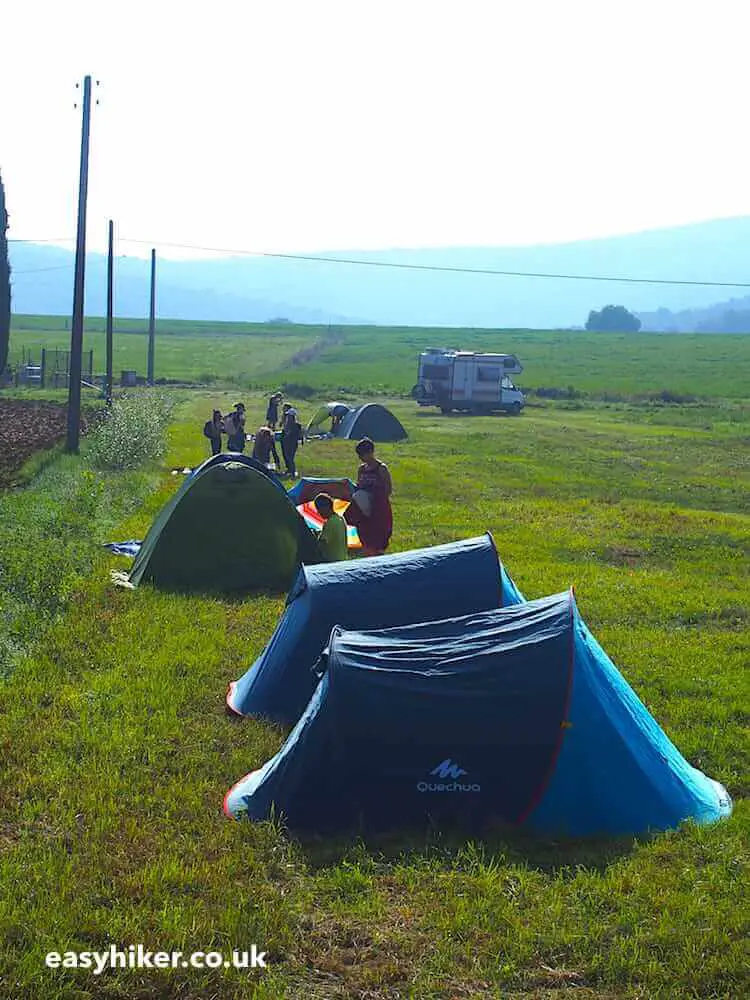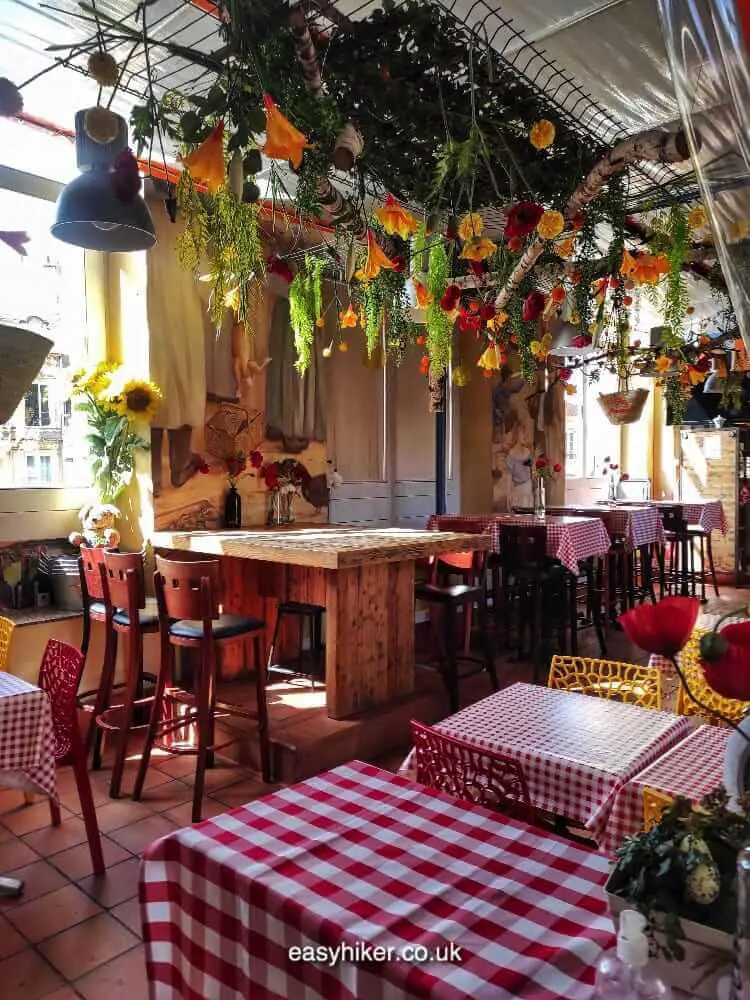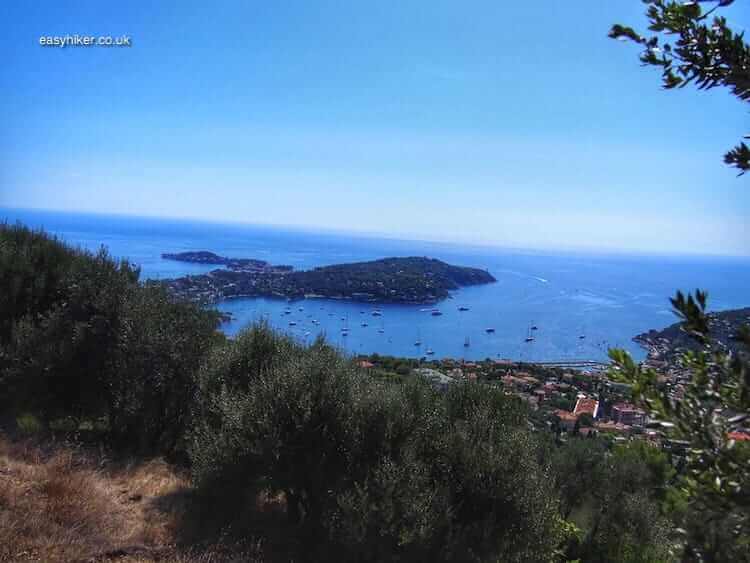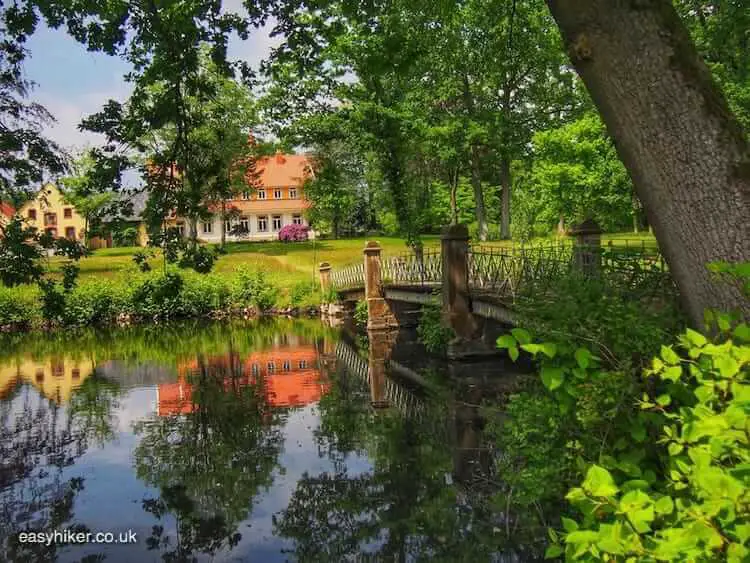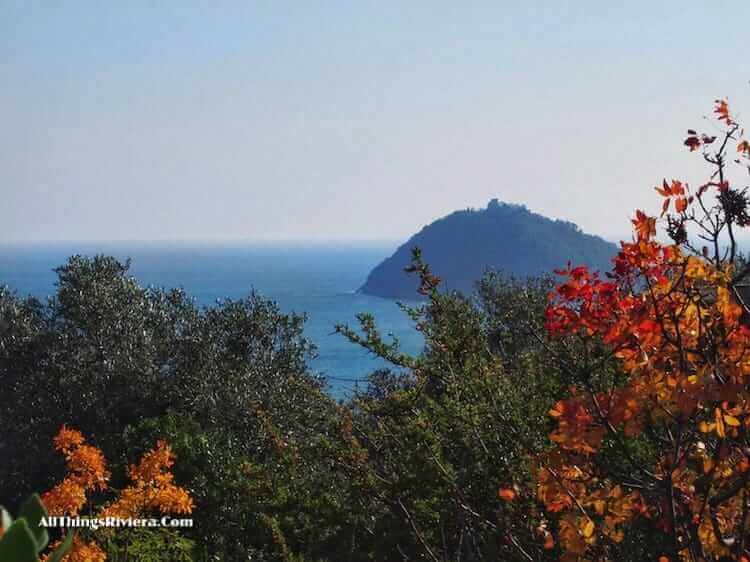Slow Travel, as we told you last week, may involve a lot of hiking, but there is more to it than that. Another key imperative is to take not only your physical self on the journey you are undertaking, but also your mind.
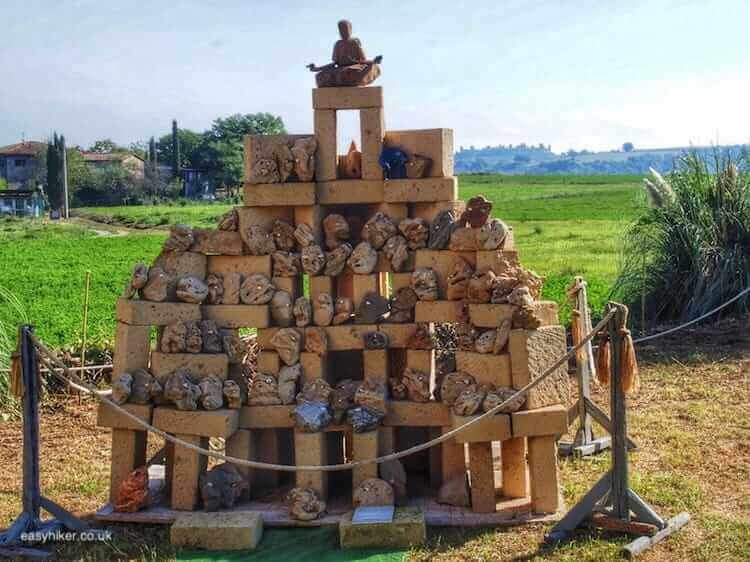
Translated into every-day terms this means that the challenge is to take your mind to places where it does not normally go. Because if you don’t want to travel somewhere new, what‘s the point of going at all?
Slow travel putting mindfulness in travel
For us, one way of doing this was to approach hiking in new ways. Easy hiking is all about seeking a civilized, but ultimately distant encounter with nature. We greet Cousin Tree with a smile and a friendly nod, like we would a distant neighbour in the same apartment building. But there are other ways of approaching and experiencing nature.
Among the Slow Travel Fest’s highlights and best attended events were the fascinating insights into the world of bushcrafting provided by Andrew T. Price (UK readers may recognize him from his TV shows in BBC Wales).
You may be thinking that bushcrafting is all about eating insects and squeezing water out of cacti, but you would be wrong. Many of the survival skills that Andrew taught also have a relevance for every-day easy hikers like us.
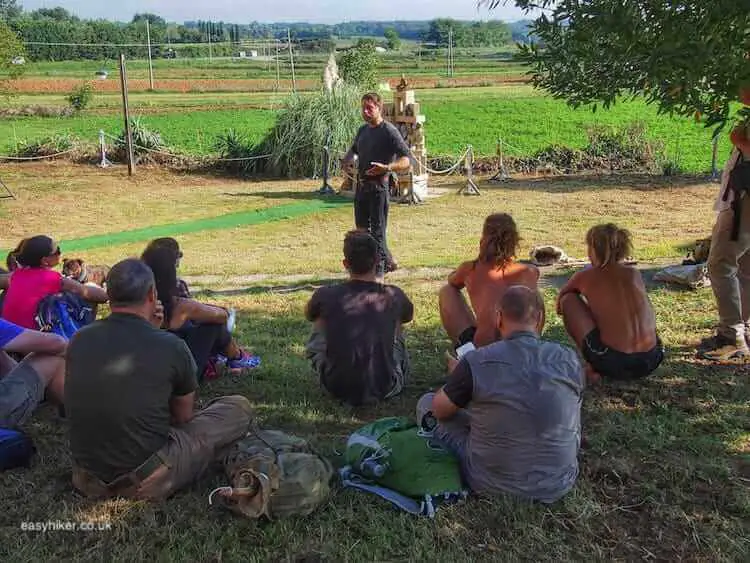
Take clothes, for example. Layering various light cotton garments may provide comfort on a brisk autumn day in the streets of Paris or London. Out on a hike, once it has started to rain, this is not such a good idea.
When cotton gets wet, it clings to the body and reduces your body temperature. Hypothermia can occur even at relatively mild temperatures several degrees above zero, particularly when there is a cold wind blowing.
In this kind of cold, you may not have to cut off your toes to survive, but the exposure can be enough to spoil your outing (and, perhaps, the next few days as well). (Andrew’s tip: in cold weather, wear something made of wool.)
Or take fire. When you are lost in the woods and darkness comes creeping in, fire is not only there to help you cook food, to provide warmth or to signal for help (in which case: put some wet wood on your fire, fresh branches for example, to generate more smoke).
“Often, a fire’s main purpose is to raise your spirits”, Andrew says. “This is something we carry in our DNA: a fire makes us feel safe and in control. Such a feel-good factor increases our will to survive, which is often the most important thing in a crisis.”
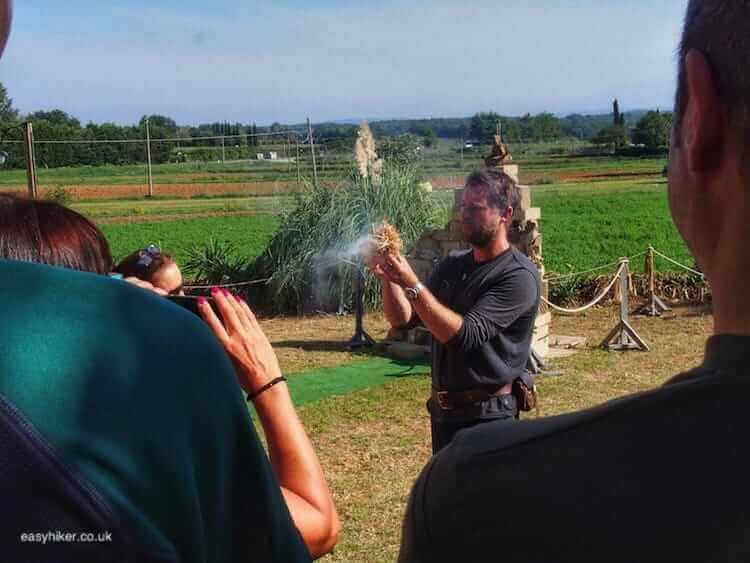
But how to make a fire? You need three things: dried fuel wood (dead tree trunks or branches), a spark (in any but the most extreme conditions, matches will do – provided you have kept them dry – or a cigarette lighter: it takes Arctic conditions to freeze their fuel) and an immediately inflammable “fire starter”
Andrew’s tip: cotton balls from your first-aid kit make ideal starters, particularly once you have picked the tightly wrapped balls a little apart. One strong spark, and they will instantly go up in flames especially if you put in some (ear) wax or petroleum jelly.
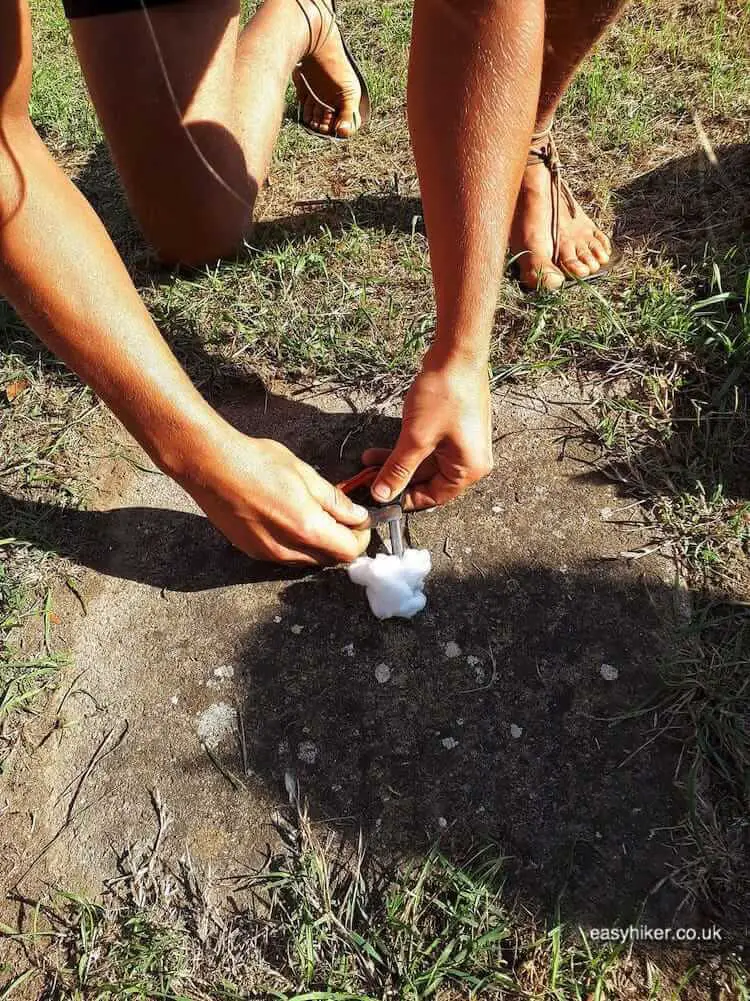
On the topic of first-aid kits for hikers: their objective should be to address the problem before help can arrive or you have made it to the next town.
For hikers out there in the wild who handle sharp knives – a tip: always use your “backhand” when cutting …
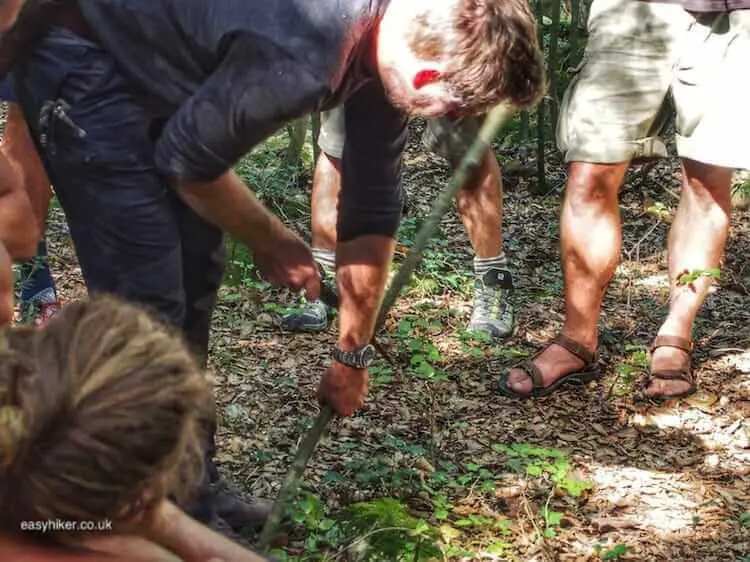
… First Aid means above all to stop a wound from bleeding.
For people who do not use sharp knives, first aid means stop an attack of back pain (bring some painkillers), stop the pain in sore feet (bring plasters) and stop a small scratch from developing into an infection (bring antiseptic wipes).
But while Nature can be an enemy, she can also be a close friend. This is the key insight of Forest Bathing.
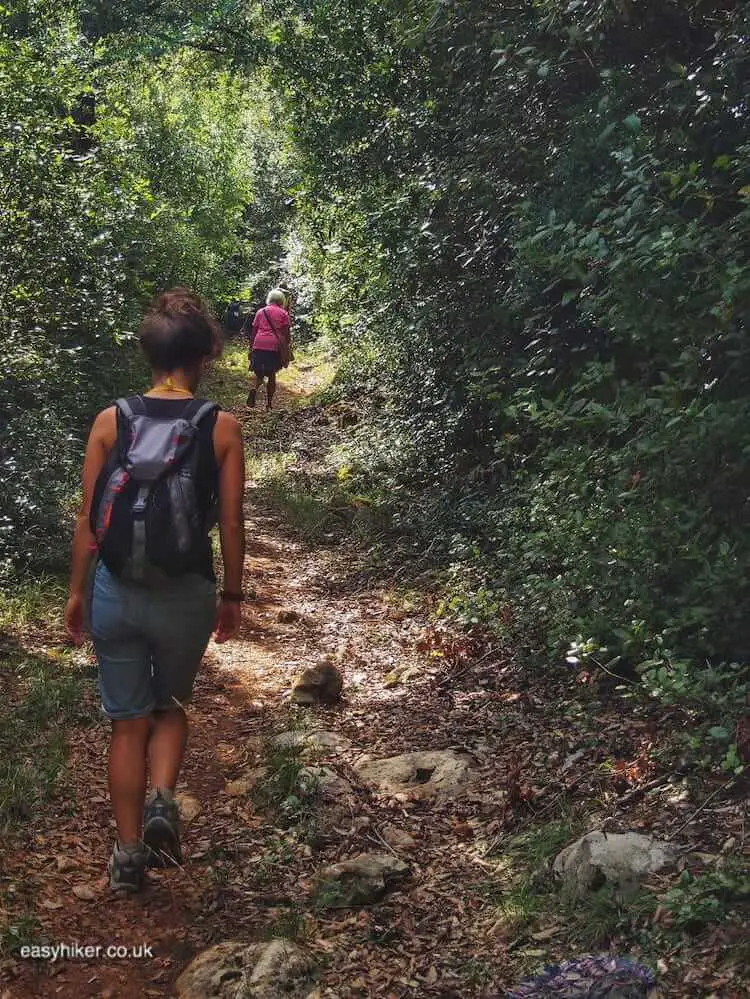
Forest Bathing: the name may sound a little New Age-y, but the concept itself also has practical aspects.
Trees and plants have, over the hundreds of millions of years of their existence, developed mechanisms – the emission of certain substances and fragrances – to defend themselves against harmful insects and parasites.
These defence systems can also be tapped by humans, helping us to strengthen our own immune systems.
Humans have done so unknowingly – just by walking in forests for two hours at least – for thousands of years. But to preserve this ability, we must “use it or lose it”, and by creating and living in a largely artificial environment, we have lost it and must now re-activate these functions in us by taking regular walks in the woods.
The important thing is to concentrate on the experience. Switch off your mobile phone, do not think of anything you have left behind in your town and office. And be mindful, which means: take yourself the time to find all those little treasures that are scattered along the way.
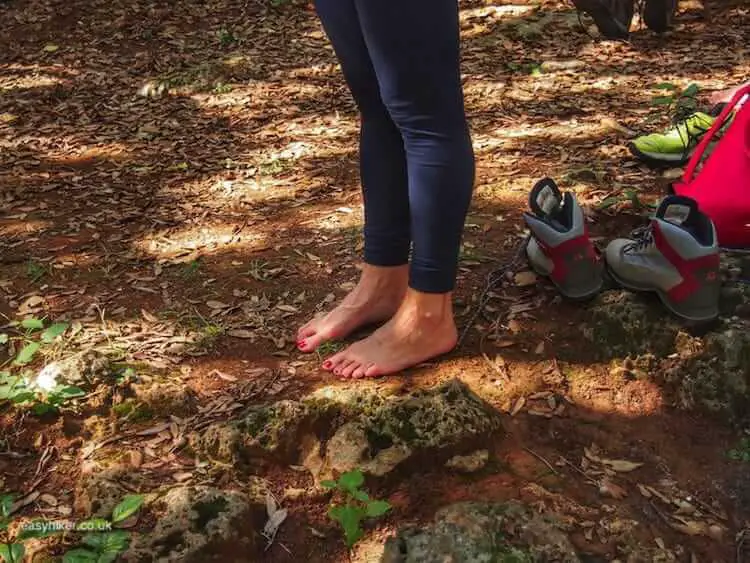
But does all of this work even if you don’t believe in it? This is, after all, the acid test for every new therapy. Not only the true believers: sceptics should also feel the energy of Mother Earth that flows through their bare feet.
Which brings me to the – initially sceptic – Patient One of Forest Bathing: Mrs. Easy Hiker.
Recently, she appears to have developed an allergy against something that inhabits Mediterranean forests during the summer months, but after a bout of Forest Bathing, there were – much to her surprise as well as mine – no itchy welts on her legs.
To be honest with you: I remain less than fully convinced, but am willing now to believe in the possibility of there being more things in heaven and in forests than are dreamt of in my philosophy.
Freshly encouraged, we tried the mindfulness approach on our way back from the Fest when we, somewhat against our plans, had to pass two hours between trains in a place called Castellina in Chianti. Instead of cursing our fate and retreating resentfully to a bench in the waiting room, we made the best of it – and went in search of little treasures.
And this is what we found: some street paintings …
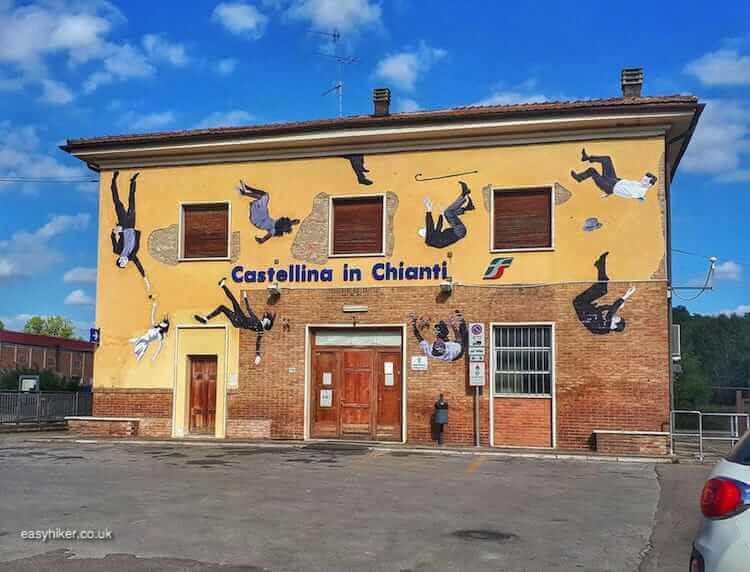
… as well as Acqua House, a reloading station for your water supply which doubled up as central bus station, a wall painting of a crocodile with a briefcase.
We also met the “Kid with a ghetto blaster”, practising new skills on his mountain bike, the girl in the sexy trousers (twice), and we found the bar that is open all day (even on Sunday afternoons!).
And then there was this, outside a community centre. Go and take a closer look and tell me: what on earth is going on here?
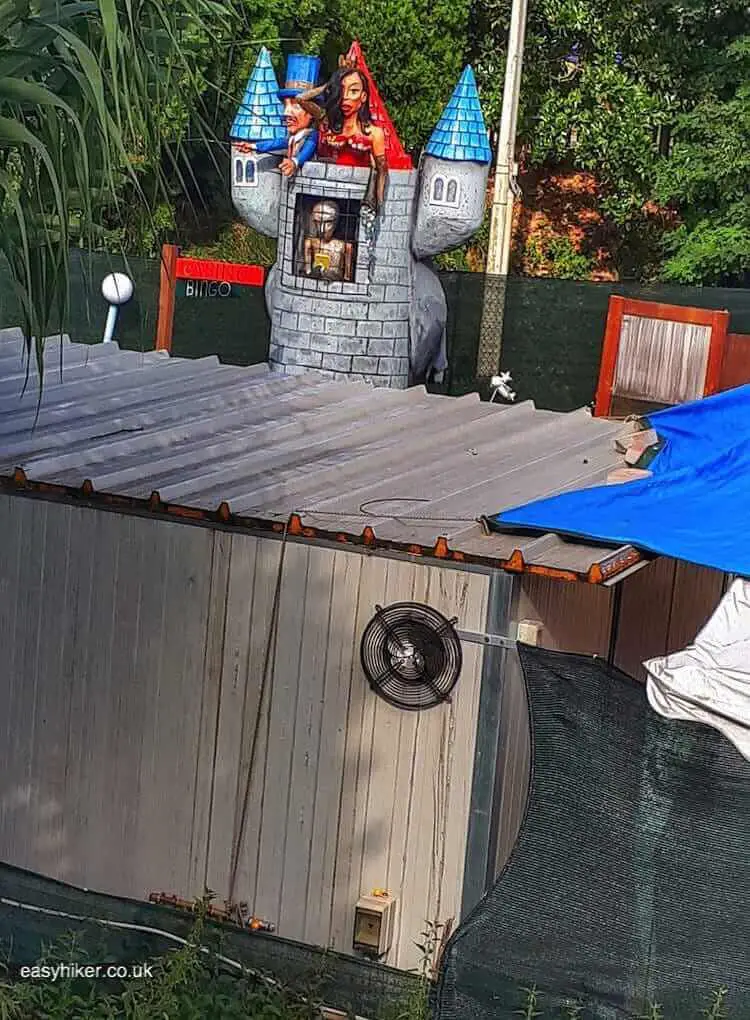
Time was too short to work out an answer – or to find out what other little treasures Castellina in Chianti holds. I guess this means that we must return to next year’s Slow Travel Fest, then.
Maybe even to do something radically new: perhaps to open up our focus of the “small outdoors” to include the “slightly larger outdoors”. Slow travel putting mindfulness in travel?
I never thought I would ever say this, but the sight of young “slow travel nomads” in their tents outside the Isola Abbadia festival site lent the event an almost irresistible hippy-esque charm, a little like Woodstock maybe.
The scene certainly looked very attractive in the soft early morning light. Let’s see what Mrs. Easy Hiker has to say about that.
